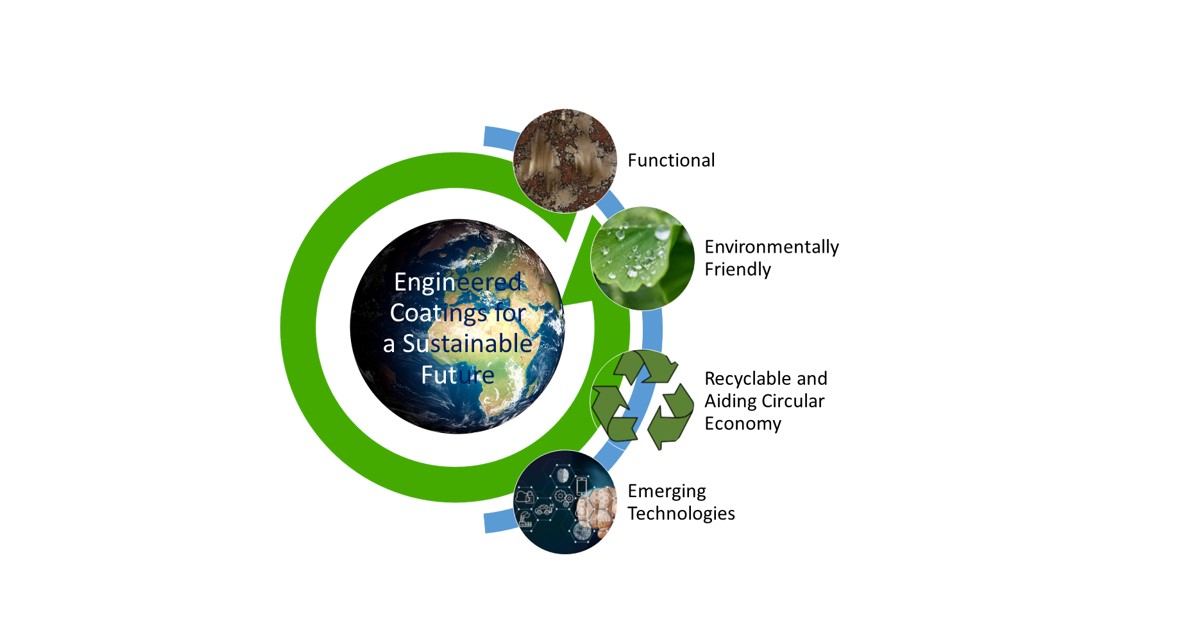Engineered Coatings for a Sustainable Future
A special issue of Coatings (ISSN 2079-6412). This special issue belongs to the section "Corrosion, Wear and Erosion".
Deadline for manuscript submissions: 31 January 2026 | Viewed by 1381

Special Issue Editors
2. Materials Innovation Centre, School of Engineering, University of Leicester, Leicester LE1 7RH, UK
Interests: corrosion; electrochemistry; environmental performance of materials; thermal spray coatings; alloy development
Special Issues, Collections and Topics in MDPI journals
Interests: of multilayer anticorrosive coatings for offshore environments; performance evaluation of coatings in service conditions using electrochemical techniques; thermal spray coatings and organic coatings loaded with corrosion inhibitors and self-healing materials; polymer recycling based on ionic liquids and deep eutectic solvents; development of superhydrophobic coatings
Special Issue Information
Dear Colleagues,
Engineered coatings represent a crucial technological advancement in the quest for a sustainable future. Such coatings address numerous challenges across all industrial sectors. These advanced coatings are designed not only to provide surface protection, but also to enhance performance, durability, and environmental sustainability. By integrating cutting-edge innovations in materials science and engineering, these coatings significantly contribute to energy efficiency, resource conservation, and pollution mitigation. An important consideration is the recyclability of these coatings, including the development of formulations that facilitate remediation, removal and recycling, thus supporting the principles of a circular economy. Engineered coatings are indispensable in extreme environmental applications, such as aerospace, subsea, and harsh industrial environments, where they must endure severe conditions without their performance becoming compromised. The reliance on critical raw materials poses additional challenges, necessitating the creation of coatings that minimize the utilization of these materials while delivering essential functionalities, including corrosion resistance, thermal insulation, and antimicrobial properties. Importantly, these coatings are engineered to achieve adequate functionality with minimal material usage, with both the chemistries and application processes optimized to attain the desired functional outcomes using more efficient deposition.
This Special Issue delves into the latest advancements and applications of engineered coatings, highlighting their potential to drive sustainability and efficiency across sectors such as construction, transportation, healthcare, and energy. Through interdisciplinary research and collaboration, we can fully exploit the potential of engineered coatings to foster a more resilient and sustainable future.
The scope of this Special Issue includes, but is not limited to, the following topics:
- Sustainable coating designs;
- Materials science-driven engineered coatings;
- Innovations in surface protection and coatings technologies;
- Enhancements in durability and performance of coatings by novel engineering;
- Strategies for enhancing recyclability and sustainability of coatings;
- Applications of coatings in extreme environmental conditions;
- Mitigation of the environmental impact of the production, application, and end-of-life processing of coatings;
- Interdisciplinary approaches to optimizing coating functionalities;
- AI-driven innovations in coatings development.
Dr. Shiladitya Paul
Guest Editor
Dr. Adamantini Loukodimou
Guest Editor Assistant
Manuscript Submission Information
Manuscripts should be submitted online at www.mdpi.com by registering and logging in to this website. Once you are registered, click here to go to the submission form. Manuscripts can be submitted until the deadline. All submissions that pass pre-check are peer-reviewed. Accepted papers will be published continuously in the journal (as soon as accepted) and will be listed together on the special issue website. Research articles, review articles as well as short communications are invited. For planned papers, a title and short abstract (about 100 words) can be sent to the Editorial Office for announcement on this website.
Submitted manuscripts should not have been published previously, nor be under consideration for publication elsewhere (except conference proceedings papers). All manuscripts are thoroughly refereed through a single-blind peer-review process. A guide for authors and other relevant information for submission of manuscripts is available on the Instructions for Authors page. Coatings is an international peer-reviewed open access monthly journal published by MDPI.
Please visit the Instructions for Authors page before submitting a manuscript. The Article Processing Charge (APC) for publication in this open access journal is 2600 CHF (Swiss Francs). Submitted papers should be well formatted and use good English. Authors may use MDPI's English editing service prior to publication or during author revisions.
Keywords
- recyclable, non-toxic, and biodegradable coatings
- low VOC (volatile organic compounds) coatings
- renewable materials and coatings
- energy-efficient and resource-efficient coatings
- eco-friendly coatings with a reduced environmental impact
- advanced materials and coatings
- high-performance coatings
- durable coatings
- functional coatings
- corrosion resistant coatings
- thermal barrier coatings
- self-cleaning and self-healing coatings
- antimicrobial coatings
- wear resistance coatings
- sustainable by design coatings
Benefits of Publishing in a Special Issue
- Ease of navigation: Grouping papers by topic helps scholars navigate broad scope journals more efficiently.
- Greater discoverability: Special Issues support the reach and impact of scientific research. Articles in Special Issues are more discoverable and cited more frequently.
- Expansion of research network: Special Issues facilitate connections among authors, fostering scientific collaborations.
- External promotion: Articles in Special Issues are often promoted through the journal's social media, increasing their visibility.
- e-Book format: Special Issues with more than 10 articles can be published as dedicated e-books, ensuring wide and rapid dissemination.
Further information on MDPI's Special Issue policies can be found here.






